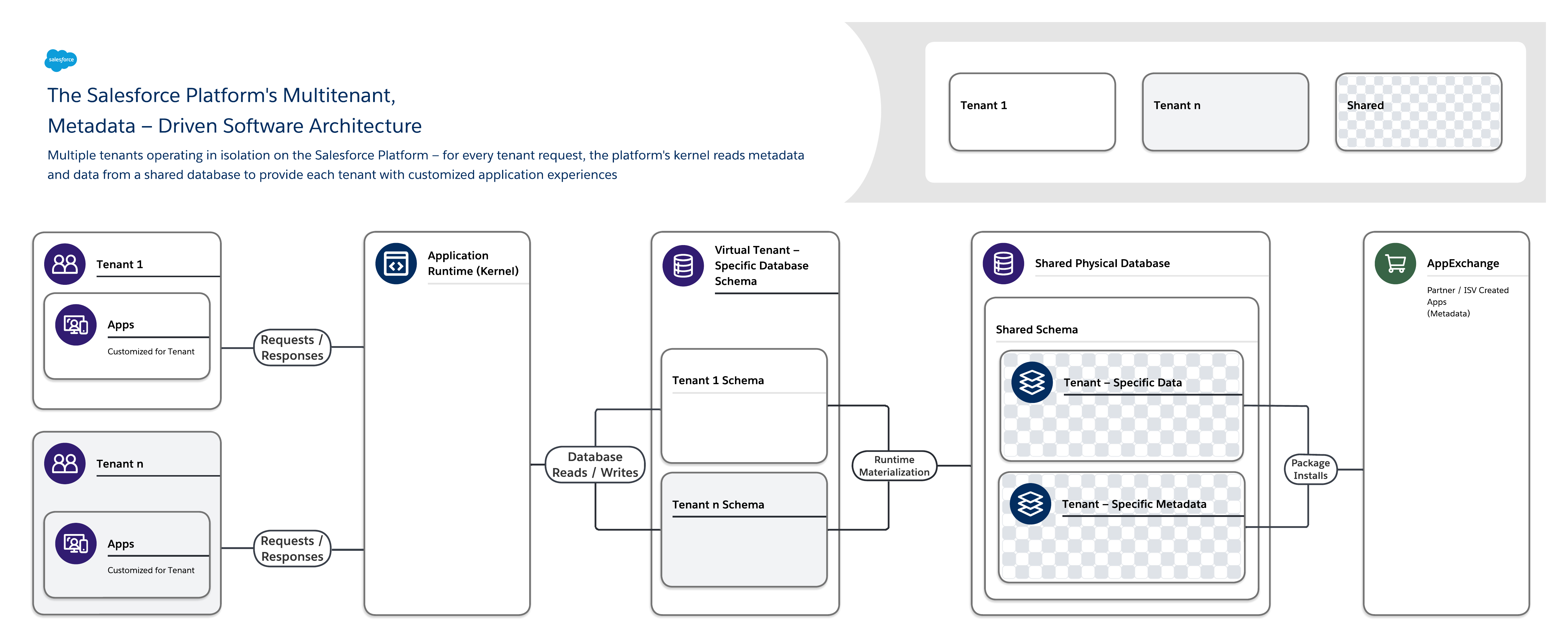Metadata-Driven Development Approach
(Redirected from approach to software development)
Jump to navigation
Jump to search
A Metadata-Driven Development Approach is a software development approach that ...
- Example(s):
- as followed by Salesforce CRM.
- ...
- See: Model-Driven Development.
References
2023
- chat
- Metadata-driven development is an approach to software development where a software application's design, configuration, and behavior are defined and controlled through metadata rather than being hard-coded within the software itself. Metadata is data that describes other data or provides contextual information about it. In this context, metadata usually refers to the specifications, rules, or configuration settings that determine how a software application should function.
The core idea behind metadata-driven development is that developers can create more flexible, adaptable, and maintainable software systems by abstracting the configuration and behavior from the actual source code. This approach makes it easier to update, modify or extend the application without changing the underlying codebase. It also promotes better separation of concerns, as developers can focus on implementing the core functionality while other team members can work on configuring the application's behavior using metadata.
- Metadata-driven development is an approach to software development where a software application's design, configuration, and behavior are defined and controlled through metadata rather than being hard-coded within the software itself. Metadata is data that describes other data or provides contextual information about it. In this context, metadata usually refers to the specifications, rules, or configuration settings that determine how a software application should function.
2023
- chat:
- Key components of the Salesforce multi-tenant architecture pattern include:
- Metadata-driven development: Salesforce CRM stores the customizations and configurations for each tenant as metadata. This approach enables rapid application development, as developers can build and modify applications through configuration changes rather than modifying the underlying code.
- Key components of the Salesforce multi-tenant architecture pattern include:
2021
- https://architect.salesforce.com/fundamentals/platform-multitenant-architecture
- QUOTE:

- The Salesforce Platform’s software architecture is:
- Multitenant — It isolates and concurrently supports the varying requirements of many tenants (organizations, business units, and so on).
- Metadata-driven — It lets every tenant easily and quickly customize their apps and user experiences using metadata, data that describes elements such as the user interface (UI) and business logic.
- When you create a new application object or write some code using the Salesforce Platform, the platform does not create an actual table in a database or compile any code. Instead, the platform simply stores some metadata that the it can then use at runtime to dynamically materialize virtual application components. The platform ensures that every tenant’s metadata is private and easy to update without any locking or downtime required so that every tenant can build and customize apps in isolation. The Salesforce Platform uses the same metadata to provide custom APIs, RESTful and web services (SOAP-based) interfaces you can use to integrate your applications with other applications and automated processes.
- QUOTE: